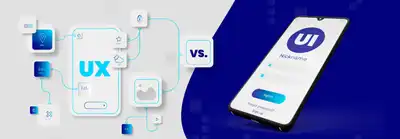Digital Accessibility: A Design Responsibility That Evolves with Regulations
As UX/UI designers, one of the fundamental pillars of our work is ensuring that the digital products we create are inclusive, efficient, and usable for all people, regardless of their abilities. Recently, I had the opportunity to attend the Digital Accessibility Congress organized by CONAPDIS (National Council for Persons with Disabilities), where legal and technical foundations for implementing accessible websites were addressed, especially in the Costa Rican context.
This space was key to reinforcing the importance of integrating accessibility from the early phases of digital product design and development. When was the last time you checked if your website is truly accessible to all your users?
A Legal Framework That Not Only Demands but Drives Innovation
Costa Rica has a solid legal foundation in digital accessibility matters. Laws such as Law 7600, the International Convention on the Rights of Persons with Disabilities (Law 8661), and Presidential Directive 036 establish that institutional websites must be fully accessible.
But here's what's interesting: compliance with WCAG 2.2 guidelines at levels A and AA—representing a total of 55 technical criteria—is not just a legal obligation. It's a competitive advantage that many companies have yet to discover.
According to recent studies, 15% of the world's population lives with some type of disability, representing a market of more than $1.3 trillion in purchasing power that companies are missing out on.
What Does This Mean for Us as Designers?
During the congress, one of the points that impacted me most was the reality that accessibility is not an "add-on" at the end of the design process. It must be the DNA of every decision we make from the first wireframe.
WCAG 2.2 guidelines have evolved to cover specific needs:
For visual impairment:
- Minimum contrast of 4.5:1 for normal text and 3:1 for large text
- Text alternatives for all informative images
- Consistent navigation without relying solely on color
For hearing impairment:
- Subtitles for multimedia content
- Complete transcriptions of audio content
- Visual alternatives for sound alerts
For motor impairment:
- Complete keyboard navigation
- Interaction areas of at least 44x44 pixels
- Sufficient time to complete tasks
For cognitive impairment:
- Clear and simple language
- Predictable navigation structures
- Help and error recovery mechanisms
The Real Impact: Beyond Compliance
What I learned at this congress is that an accessible site is not only more inclusive, it's better for everyone. Accessibility principles improve the overall user experience:
- Better SEO: Correct semantic elements required by accessibility improve search engine rankings
- Higher conversion: Clearer interfaces and more intuitive navigation benefit all users
- Cost reduction: Implementing accessibility from the start is 6 times more economical than remedying after launch
Designing for All: WCAG 2.2 Accessibility in the UX/UI Workflow at ParallelDevs
In every project we develop, accessibility is an integral part of our UX/UI design process:
- Previous audits: We analyze specific accessibility needs from the discovery phase
- Inclusive design: We create prototypes that meet WCAG standards from day one
- Continuous testing: We validate with specialized tools and, when possible, with real users
- Clear documentation: We deliver detailed implementation guides to maintain accessibility over time
The Cost of Not Acting
Did you know that web accessibility lawsuits have increased 320% in the last three years? Companies like Target, Netflix, and Domino's have faced million-dollar lawsuits for inaccessible websites.
But beyond legal risk, there's the opportunity cost: every day your site isn't accessible, you're losing potential customers and damaging your brand reputation.
Your Next Step Toward Digital Inclusion
Digital accessibility should not be seen as a barrier, but as a natural extension of good design practices. This congress reaffirmed that complying with regulations doesn't mean limiting creativity, but expanding toward solutions that work for more people.
At ParallelDevs, we believe that true innovation happens when we design thinking of everyone. Every line of code, every visual element, every interaction should build bridges, not barriers.
Ready to Make Your Site Truly Accessible?
Don't wait for accessibility to become a legal or reputation problem. Act now and turn inclusion into your competitive advantage.



